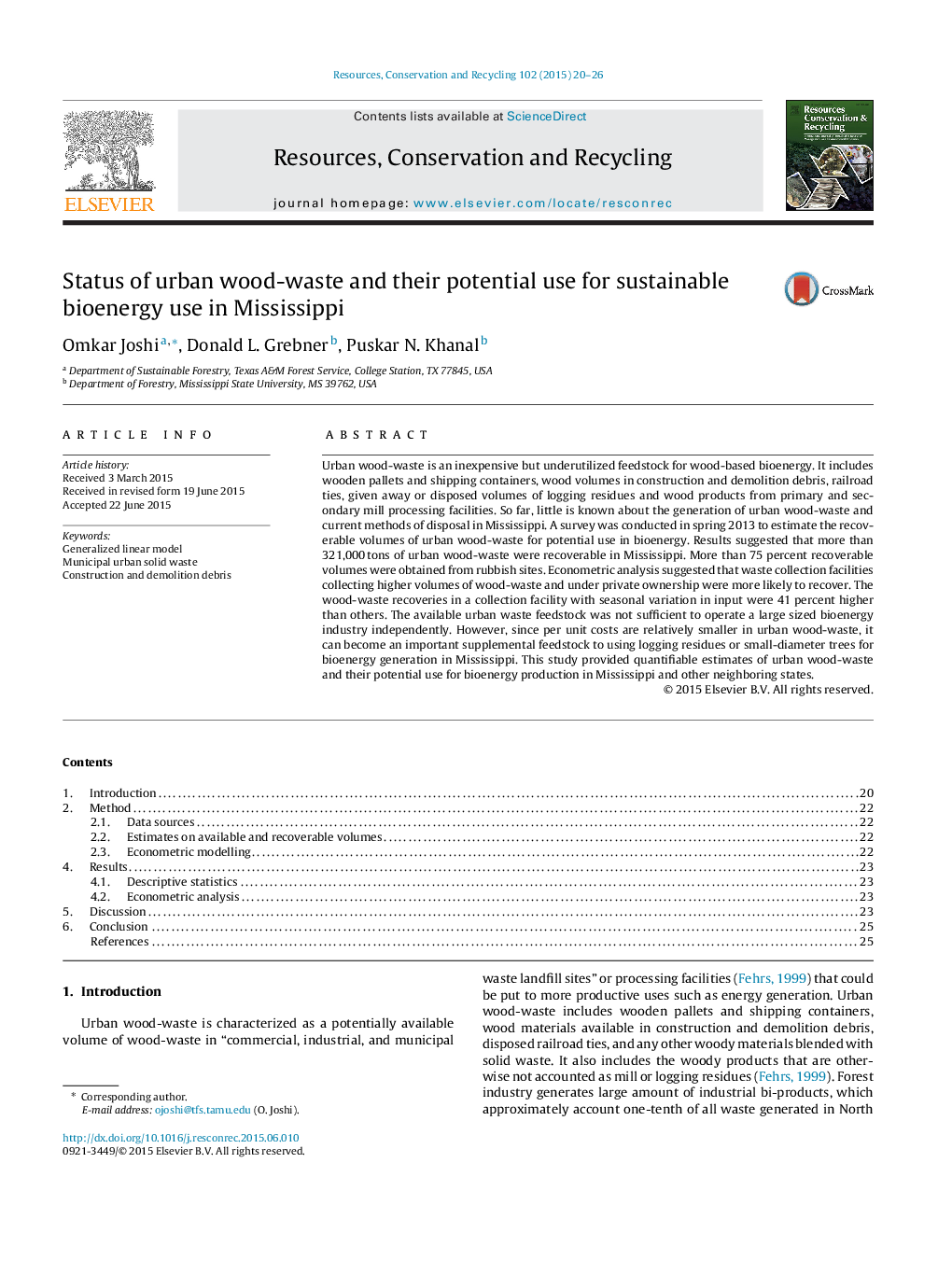| Article ID | Journal | Published Year | Pages | File Type |
|---|---|---|---|---|
| 7495068 | Resources, Conservation and Recycling | 2015 | 7 Pages |
Abstract
Urban wood-waste is an inexpensive but underutilized feedstock for wood-based bioenergy. It includes wooden pallets and shipping containers, wood volumes in construction and demolition debris, railroad ties, given away or disposed volumes of logging residues and wood products from primary and secondary mill processing facilities. So far, little is known about the generation of urban wood-waste and current methods of disposal in Mississippi. A survey was conducted in spring 2013 to estimate the recoverable volumes of urban wood-waste for potential use in bioenergy. Results suggested that more than 321,000Â tons of urban wood-waste were recoverable in Mississippi. More than 75 percent recoverable volumes were obtained from rubbish sites. Econometric analysis suggested that waste collection facilities collecting higher volumes of wood-waste and under private ownership were more likely to recover. The wood-waste recoveries in a collection facility with seasonal variation in input were 41 percent higher than others. The available urban waste feedstock was not sufficient to operate a large sized bioenergy industry independently. However, since per unit costs are relatively smaller in urban wood-waste, it can become an important supplemental feedstock to using logging residues or small-diameter trees for bioenergy generation in Mississippi. This study provided quantifiable estimates of urban wood-waste and their potential use for bioenergy production in Mississippi and other neighboring states.
Keywords
Related Topics
Physical Sciences and Engineering
Energy
Renewable Energy, Sustainability and the Environment
Authors
Omkar Joshi, Donald L. Grebner, Puskar N. Khanal,
